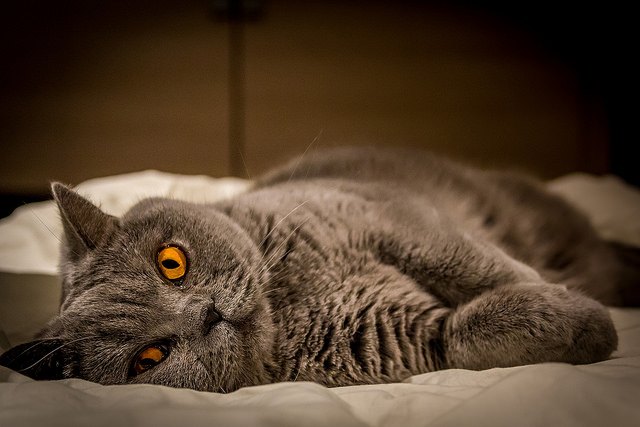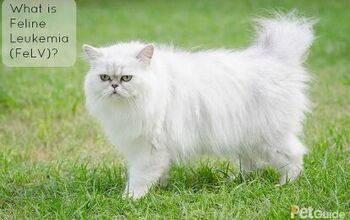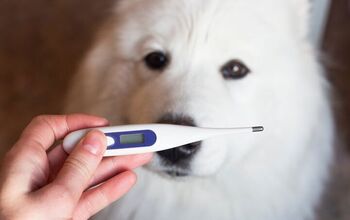What Is Feline Hyperthyroidism?

Just like humans, cats can suffer from hyperthyroidism, which is basically an overactive thyroid gland. But what causes the thyroid to become imbalanced, and what can you do to treat your cat if he has been diagnosed with this condition? Continue reading to learn more.
What Causes Feline Hyperthyroidism?
Feline hyperthyroidism is characterized by an overabundance of thyroid hormone. According to Cornell University College of Veterinary Medicine, it can affect cats of all breeds and of both genders. However, it typically occurs in middle aged and senior cats. And, according to the ASPCA, under 6 percent of hyperthyroidism cases occur in felines younger than 10, with the age of onset averaging between 12 and 13 years.
Functional benign enlargement, which is referred to as adenoma, is the most common cause of feline hyperthyroidism. A more rare cause (about 2 percent of cases) is thyroid carcinoma, or cancer of the thyroid. And in roughly 70 percent of kitties that have the condition, both of the thyroid’s lobes will be affected.
What are the Symptoms?
Symptoms that are commonly associated with hyperthyroidism in cats include:
- Weight loss
- Poor coat, an increase in shedding, unkempt appearance
- Excessive appetite and/or thirst
- A rapid heart rate
- Vomiting or diarrhea
- Nervousness, anxiety
- Hyperactivity
- Increased urination
- Panting
- Vocalizations
How Can It Be Treated?
There are several treatment options, though your vet will determine what the best course of action will be for your particular pet.
Dietary Changes: Your vet may discuss dietary changes that can help bring your cat’s thyroid back into a state of balance. Prescription diets specially formulated for thyroid health are available, so discuss your cat’s best options with your vet and ask about iodine-containing foods that should be reduced or eliminated from your pet’s diet for optimal results.
Medications: Certain prescription drugs are designed to inhibit the thyroid’s production of thyroxin hormone. These are often effective, but you may have to give them to your cat for the rest of his life and there could be side effects. Adverse reactions may include vomiting, lack of appetite, bleeding, depression, facial swelling, itching, and rashes. Your vet may need to adjust the dosage over time, so periodically having your cat re-examined is important.
Radioactive Iodine Therapy: In this therapy, radioactive iodine is administered via injection. It will become concentrated within the thyroid, and because it’s radioactive, it will destroy the tissue that is overproducing the hormone. Cats who receive this treatment may need to get it only once, but they may also be required to stay in the hospital for several days until their feces and urine aren’t highly radioactive anymore. This treatment isn’t available at all veterinary facilities. Your vet will weigh the pros and cons of the treatment to determine if it is right for your cat.
Surgery: Removing the thyroid through surgery is an option for felines with a benign tumor, also known as thyroid adenoma, on one or both lobes. It’s important to note, though, that surgery may not always fix the problem because both lobes could be overactive even though only one of them looks enlarged. Also, to perform the surgery, general anesthesia will be necessary, and older cats may have kidney, heart, and other complications. Plus, the removal of the parathyroid may result in calcium metabolism problems. Again, your vet will know what’s best for your cat, depending upon the severity of his condition. For cats that don’t do well with oral medications or can’t receive radioactive iodine therapy, surgery is an alternative option.
The Importance of Veterinary Checkups
Hyperthyroidism is “the most common glandular disorder in cats,” according to the ASPCA, so if your cat begins exhibiting any of the symptoms associated with this condition, it’s important to have him examined by a veterinarian as soon as possible. Having your kitty checked annually can also help you find the beginnings of the disorder so that treatment can be less invasive and less severe.

Lisa Selvaggio is a freelance writer and editor, and our resident cats-pert, with certifications in pet nutrition and pet first aid. She enjoys producing content that helps people understand animals better so they can give their pets a safe and happy home.
More by Lisa Selvaggio























